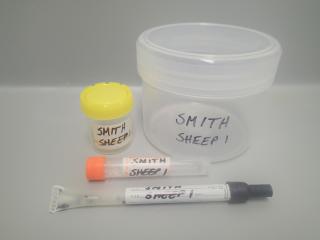Always use personal protective equipment including gloves when handling biological samples and practice good hygeine.
If you suspect an exotic, reportable or zoonotic disease, contact DPIRD Diagnostic Laboratory Services (DDLS) sample receival or the duty pathologist on +61 (0)8 9368 3351 or DDLS@dpird.wa.gov.au before submission.
Download a printable PDF version of the veterinary sample packaging guide here.
Laminated copies of the guides are available to WA private vets on request from your local DPIRD Field Veterinary Officer.
Download a copy of the DDLS laboratory submission form here.
Veterinary sample packaging guide
1. Ensure labelling is readable and indelible
2. Check lids are tightly sealed
3. Remove all needles, scalpels and gloves
4. Secure blood tubes
5. Protect blood films
6. Use absorbent material
7. Place all samples in the esky
8. Seal the esky with tape
9. Attach courier label
For more information or advice on conducting livestock post-mortems or sampling required for disease exclusions, contact DPIRD Diagnostic Laboratory Services - animal pathology unit.

